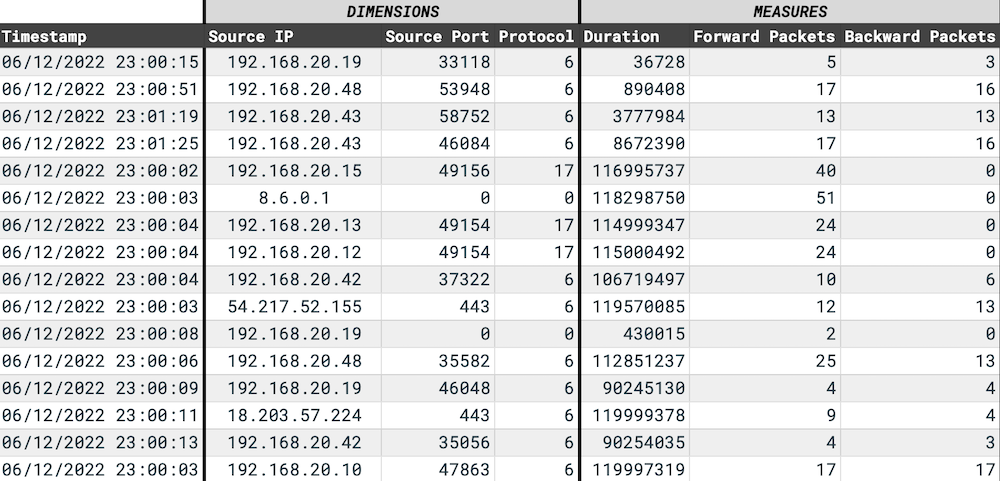What Is High Cardinality?
Cardinality is a data attribute that captures how many distinct values make up a set. In turn, having high cardinality data means that there is a large number of unique values in the dataset.
In the context of databases, cardinality often refers to the number of distinct
elements in a single column. For example, in a database storing e-commerce data,
a column might store customerId whereas others may store productId or
productCategory. customerId and productId are high-cardinality attributes
with potentially unbounded distinct values. On the other hand, productCategory
may be a low-cardinality attribute in comparison with a smaller set of values.
When discussing the cardinality of the entire dataset, to calculate the total number of unique combinations, the cardinality of each of the columns of interest is multiplied. Taking our e-commerce example, let’s say we had 10 customers, 20 products, and 2 product categories. In this case, the cardinality of the dataset would be 10 * 20 * 2 = 400.
High cardinality in time series data
Time series data tends to have high cardinality since each row will usually have many columns that act as tags. For example, in industrial IoT systems, a time series database may track device types, firmware versions, locations, as well as various sensor readings. Since cardinality is multiplicative, simply adding a new field such as a new firmware version will lead to exponential growth in cardinality. Time series data in other verticals display similar characteristics: financial data and network monitoring all have many columns with high cardinality such as stock ticker, IP, port, protocol, and other metadata fields.

Challenges for databases with high cardinality datasets
High-cardinality data can present challenges for databases in terms of performance. Depending on the underlying data model used, storing and indexing datasets with high cardinality can significantly impact performance negatively. As cardinality grows, the amount of data to be processed explodes, thus leading to degraded write and query performance.
Underneath the hood, the challenge stems from the way databases store and process data. For example, in InfluxDB and some other time series databases, each time series is stored separately in its own group of files. When storing thousands or millions of time series in the same table, write and full-scan query performance drops significantly. The reason is that disk writes and reads have much fewer sequential patterns in these high-cardinality scenarios. As a result, memory requirements grow exponentially with the number of unique time series.
Other symptoms of databases struggling with high-cardinality data include:
- High memory usage
- Slow query performance
- Back pressure
- High CPU usage
Dealing with high cardinality in QuestDB
QuestDB uses a dense, column-based storage model where each column is stored separately in its own native format. All the rows are sorted by time and split into time-based partitions to preserve sequential patterns. This allows QuestDB to maintain a good level of performance in all scenarios, including high cardinality.